On a visit to Jerusalem, Ram Dass—né Richard Alpert, the former Harvard psychedelic researcher turned psychedelics and spirituality thought leader and author of Be Here Now—was crossing a square, when two ultra-Orthodox young men in black hats approached him. “They walked with me,” Ram Dass recounted in a 2016 interview, “and said, ‘We just read your book, dropped LSD, and that’s what drew us into Orthodoxy.’”(1)
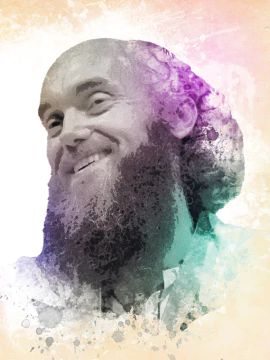
These stories are a dime a dozen, at least where I come from. Having grown up in a community with Ram Dass and other devotees of his (and my father’s) Hindu guru Neem Karoli Baba, I’m no stranger to stories of disillusioned, disconnected, disaffected Jews—like my parents and Ram Dass—unsatisfied with the assimilated, dry form of post-Holocaust Judaism they were brought up with, drawn to psychedelics. And from there, finding spiritual sustenance and avenues of integrating mysticism into daily life through religious practice.massa, eu venenatis risus imperdiet ut. Vestibulum efficitur nulla ac rhoncus iaculis.
Those like Ram Dass took to Hinduism, incorporating disciplines of yoga, meditation, and chanting into routine practice, using these embodied techniques as opportunities for Divine connection. The aim was to integrate the magic of psychedelic consciousness into the mundane, and to draw forth sustained spiritual nourishment. Others, including (once) secular Jews, turned on by psychedelics, found ways to replace getting high off substances with getting high off spirituality and religion, itself. Deadheads, seekers, and baalei teshuva (literally “masters of return,” but for all intents and purposes, born-again Jews) came up with cute slogans like “LSD: Let’s Start Davening [praying].”

One of these baalei teshuva, C.A. Green, wrote about his experience in a blog aptly titled, “How I Became Religious by Taking LSD.” In it, he describes growing up secular, finding psychedelics, and seeking answers. “My reality was realigned, remixed, and readjusted to a ‘Lynchian’ style universe where Truth felt tangible,” Green writes of his early experiences with acid.(2)
Keep Up with Uncensored Psychedelic Trends
Join our newsletter at Psychedelics Uncensored.
We respect and protect your privacy. By subscribing your info will be subject to our privacy policy . Unsubscribe easily at any time
But during one fateful trip—on LSD, and on a visit to the mystical city of Tzfat in northern Israel, known as the birthplace of Kabbalah—a stranger’s invitation into a religious ritual, coupled with the acid, heralded Green onto a ride he’s been on ever since. “I mutated from a fast-talking, weed-smoking, womanizing, grilled cheese, and longboarding hipster with a pack of light blue American Spirits in my front pocket to a card-carrying member of one of the most strict religious sects in the world. I didn’t convert because I was always Jew-ish, but I embraced my heritage with both hands.”
Carolyn Fine, a healer from Portland, Oregon, had a similar experience. Always identifying as a cultural Jew, but holding her Judaism at arm’s length. “A staunch atheist who was ‘Jewish but not practicing,’ my spirituality felt stunted, with no real personal experience of the Divine,” she describes. But an MDMA session changed that for her, when suddenly she found herself “swimming around in several thousand years of ancestral Jewish trauma.”

She said the medicine began to pull at the threads of her internalized antisemitism and the need for healing. “As the session wore on, more was revealed to me about what’s alive in my DNA. The trauma, yes—but also the miracle of Jewish survival and perseverance across the millenia,” she says. “I didn’t have to work to reconcile my disbelief in an all-powerful sky G-d with what I was experiencing in that session. Instead, it was simply, ‘Oh.’ G-d is that energy. That force that sparks and guides the process of becoming and thriving. Our assignment as Jews is to work to create the conditions in which G-d’s work can play out in all living things.”
Indeed, it’s not uncommon to hear about fallen atheists who’ve changed their tune on spirituality and the G word after a significant psychedelic experience. Nevermind what religion they’re born from, and heading toward. Adam Umansky, for instance, was an atheist, grappling with childhood trauma, and a resulting hatred toward G-d that dissipated into simple disbelief. But psychedelics turned things around for him, turning him toward a path of Zen Buddhism, kundalini, and experiences of spirituality and religion that got him higher than psychedelics, themselves. After hearing that cannabis was an integral ingredient in Christ’s holy anointing oil, used to perform miraculous healing, Umansky founded a ministry.
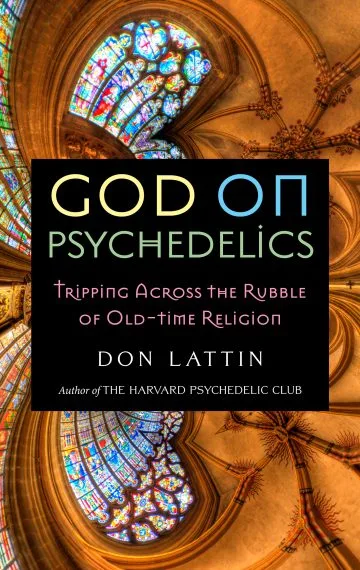
From the perspective of social science and observation, journalist Don Lattin, author of the recently published book God on Psychedelics: Tripping Across the Rubble of Old Time Religion, sees the whole psychedelic movement “as part of the shift toward people looking for spiritual experience rather than doctrine and dogma.” But it’s through religious practice, I’ve observed through my own journalism, that people can harness those spiritual highs and engage with them in containers of sober, embodied techniques (think breathwork, meditation, prayer, song, dance, yoga, and more). That’s where psychedelic integration comes in, and enables a person to not just have a spiritual experience, but to live a spiritual life.
But does spirituality—engendered by religion or psychedelics—necessitate the belief in G-d, spirits, or the supernatural? Well, that depends on how it’s defined.
“If you define G-d as ultimate reality or cosmic consciousness, that’s kind of the connection that people make with psychedelics,” Lattin tells me. “My take on it is that it’s a decentering of the self, which opens something else up. And in that decentering of the self, we can connect with something that feels like a G-d or higher power.”
Keep Up with Psychedelic Trends
Get uncensored psychedelic news, events, and updates. Join Psychedelics Uncensored!
We respect and protect your privacy. By subscribing your info will be subject to our privacy policy . Unsubscribe easily at any time
According to science, those who regularly use psychedelics—and DMT in particular—are more likely to believe in G-d. In a survey of more than 2,500 people, conducted by researchers at Johns Hopkins, 58 percent said that DMT had swayed them toward a belief in the Divine, including supernatural entities (whether these entities can be interpreted as “DMT elves” or angels is a different story). It’s not farfetched to connect the experience of DMT to experiences of G-d. DMT researcher Rick Strassman is famous for studying the relationship between Biblical prophecy and the DMT brain state, while Judeo-Christian psychonauts love pointing to the fact that the burning bush during Moses’ first prophetic encounter with G-d, might have been of the acacia species—native to the Middle East and containing DMT.(3, 4, 5)
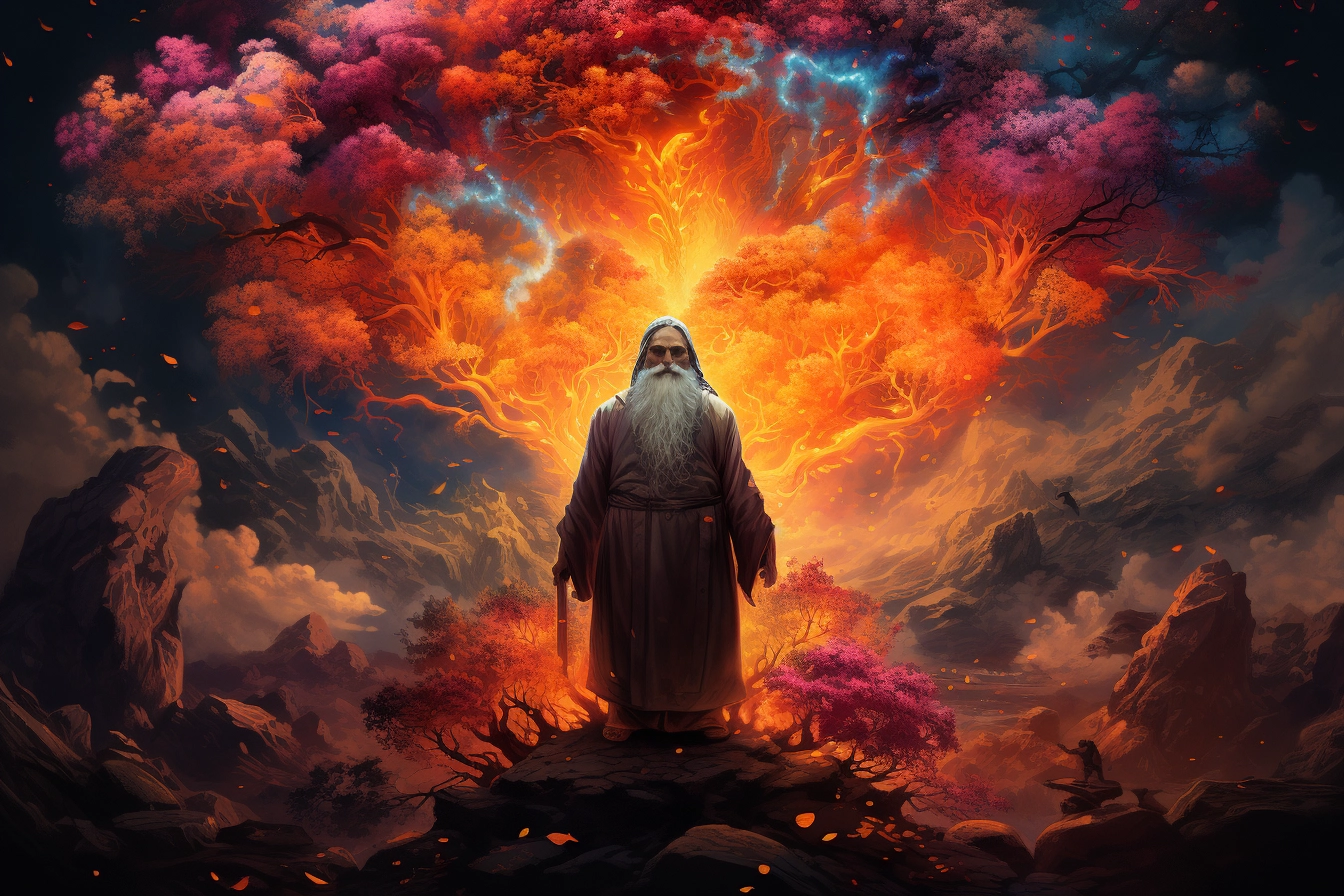
Some might argue that the point of the story isn’t whether Moses was tripping when he experienced prophecy; because not everyone who takes a psychedelic will have a prophetic, let alone spiritual, experience. And if you do believe in G-d, in the Jewish Biblical sense, then it’s likely you believe that G-d picked out Moses to be a prophet, and the presence of acacia is beside the point, or part of that master plan.
But beyond just DMT, and speaking more broadly to psychedelics in general, scientific and anecdotal evidence still tug at the correlation and intersectionality between psychedelic and spiritual experience. Another survey coming out of Johns Hopkins also points to this phenomenon, noting that “a single psychedelic experience increased a range of non-physicalist beliefs as well as beliefs about consciousness, meaning, and purpose.” Respondents to the study said that psychedelic use strengthened, reaffirmed, or inspired changes in their spiritual and mystical beliefs.
It makes sense that spiritually-oriented trippers might find integration of the psychedelic-spiritual experience in religious practice, because religion may, in fact, activate the same parts of the brain as psychedelics. One study that used fMRI to examine participants’ brains before and after a spiritual retreat found specific changes to the cingulate cortex, superior frontal lobe, parietal global, and temporal lobe—regions that are also affected by psychedelics such as ayahuasca, DMT, psilocybin, LSD, and mescaline. Given this overlap, it also therefore makes sense that in some cultures, such as indigenous tribal traditions where ayahuasca is used, the plant medicine is also used as a form of prayer.
The cingulate cortex, in particular, contains a high number of serotonin type 2A receptors—which are specifically activated by psychedelics, as well. This might explain why after prayer, or some form of spiritual experience, or after a profound psychedelic experience, a person might feel more introspective or positive. This is not to say that psychedelics and spirituality have the same effect on the brain, but that they affect overlapping neuronal structures.(6)
This intersectionality checks out. Psychedelic substances in various cultures are considered sacred. Meanwhile, as Harvard neuroscientist Michael Ferguson describes it, based on the Oxford Handbook of Positive Psychology, spirituality itself is a search for the sacred, while religion is the social system that crystallizes around this shared search. “In general, people do report that psychedelic experiences have a sacred quality to them,” he says. “It’s regularly observed that people have mystical-type experiences with psychedelics, and the intensity and quality of those experiences is associated with therapeutic outcomes.” For this reason, the line between “medicine” and “sacrament” might be fuzzier than the Western mind is used to. However, it may be a natural overlap with indigenous cultures that blend spirituality and healing in ceremony and ritual.
“If a person has an experience of oneness with the universe or oceanic boundlessness that is positively predicted with therapeutic value,” Ferguson explains. Indeed, for months or years after their psychedelic experiences, some people report them to be among the most meaningful experiences of their lives. Reckoning with the value of Divine experience, psychedelics have in some ways forced scientists to qualify spirituality, which they’ve done through questionnaires like the States of Consciousness Questionnaire or the Mystical Experience Questionnaire, which defines criteria common to spiritual experience.(7, 8)
These surveys, in part, capture how an individual goes beyond their sense of self to experience unity with all life or Being. And it’s this expanded consciousness, with decentralization or dissipation of the ego, that enables a person to transcend the limits of their mind, their fixed thought patterns, bad habits, and stuck paradigms of anxiety, depression, or trauma.
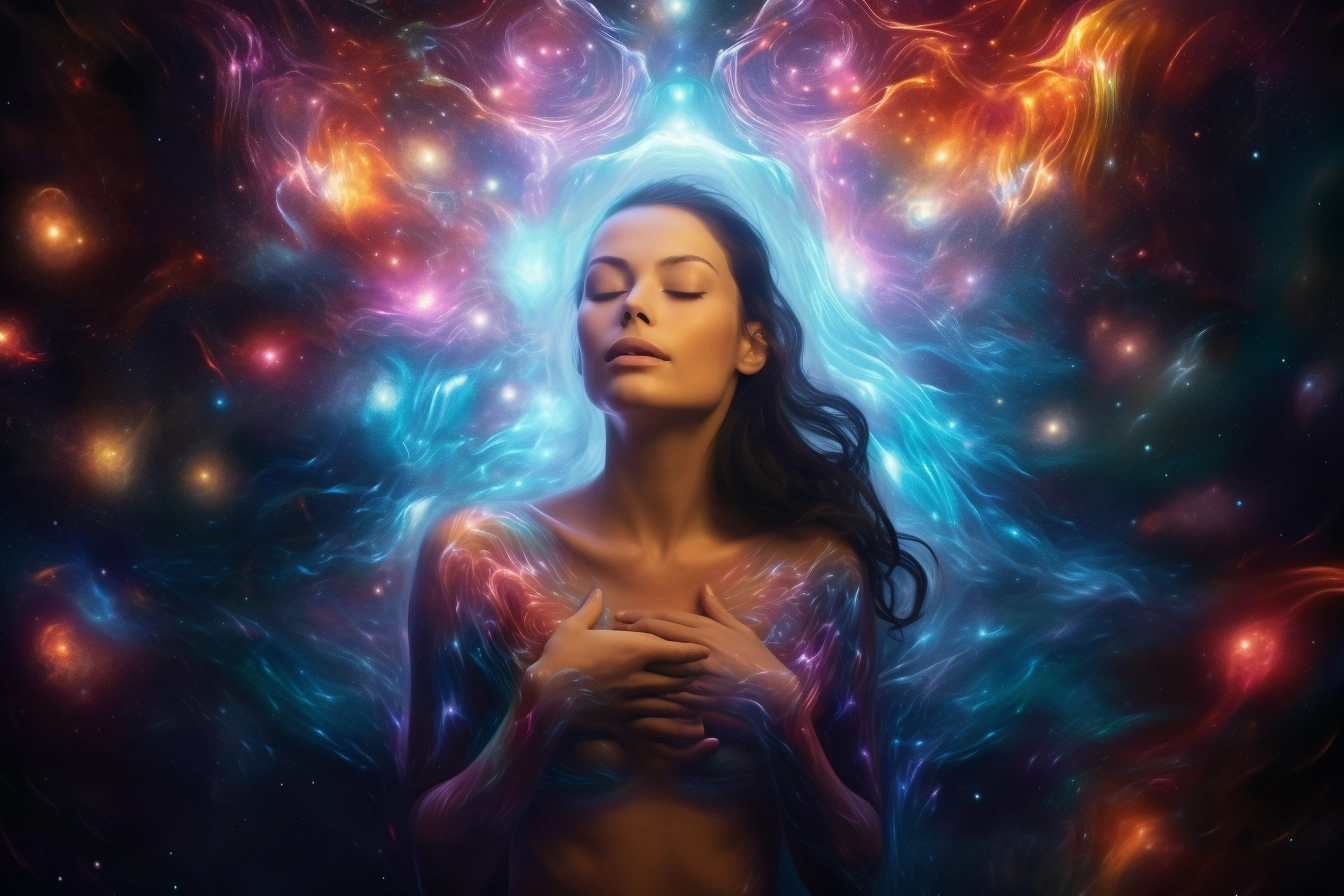
“Feeling held by the universe, knowing there is a universal latticework of love that is holding you in its web, this is a deep, peaceful feeling that can help you feel safe and cared for,” psychiatrist Julie Holland once told me in an interview. And in turn, she says, such feelings and insights can help you spend extended time in the parasympathetic mode, where the body can not only rest, digest, and repair, but also, experience neuroplasticity—“which means learning a new way of being.” This itself is a state of healing, especially in contrast to the sympathetic mode of the nervous system—one of fight or flight, or in other words, the mode that gets activated during trauma and other injuries to our mental health or physical body.(9)
The reasoning between spiritual and healing is a hotly debated area of research, says Ferguson. “A lot of people think it’s the simple ego dissolution, the fact that you lose your sense of self temporarily, and that’s where the action is happening that has some kind of therapeutic effect; whereas others argue that the sense of feeling connected to the broader experience of life is what has therapeutic value.”
Some of Ferguson’s own work has indicated that spirituality is associated with a region of the brainstem that’s known as the PAG (periaqueductal gray), which has an inverse association with the amygdala, which is connected to experiences of fear and anxiety. When the PAG is more active, the amygdala is less active. But even in researching other areas of the brain, including the VTA (ventral tegmental area), the nucleus accumbens reward system, and the hippocampus, which is related to memory, the key question remains, “Where does the experience of divinity come in? Or the experience of G-d? It’s one thing to say that an individual is having this surge of positive emotions and decrease in negative emotions, but it doesn’t answer the question of what’s happening in the brain that’s causing an experience of G-d or divinity.”
In his exploration of his question, Ferguson’s area of research, known as neuro-spirituality, looks at how the brain participates in spiritual life, “how the brain is involved in this search for the sacred.”
Taking a step back, Ferguson says that people tend to be more open-minded after a psychedelic experience, which could lead to being less dogmatic about their religious or atheist beliefs. “It tends to be the case that people have an enhanced sense of mystery or enhanced sense that life and existence generally are way bigger than they may have previously understood,” he says. “One thing that we do see is they are affecting the deepest parts of our brain and nervous system. It’s a little bit vague, but I find that exciting in the sense that there’s so much more for us to research and discover on both these topics.”
Nevermind how science describes spirituality, the real crux of the matter depends on how it plays out in real life, outside the lab, and how it’s defined by those who are experiencing shifts in spirituality in their ordinary state.
“If someone describes themselves as spiritual, we follow up and ask for a vignette. What does that mean for them practically?” asks clinical psychologist and Stockholm University researcher Aaron Cherniak, who studies psychedelic experiences embedded in lifespan spiritual development.
He lays out the 4 B’s and 4 D’s implicated in religious engagement and disengagement, respectively: bonding, belonging, behavior, and and believing; and on the flip side, disbelief, disengagement, discontinuance, and disaffiliation.
Generally, says Cherniak, those who have had psychedelic experiences “tend to become less rigid about their specific beliefs or practices, while also embracing some sort of amorphous feeling of connectedness to humanity or something outside themselves.”
He gives an example of a survey participant who didn’t feel successful in life, didn’t have things that mattered to them, and considered suicide. They decided to try mushrooms before ending their life.
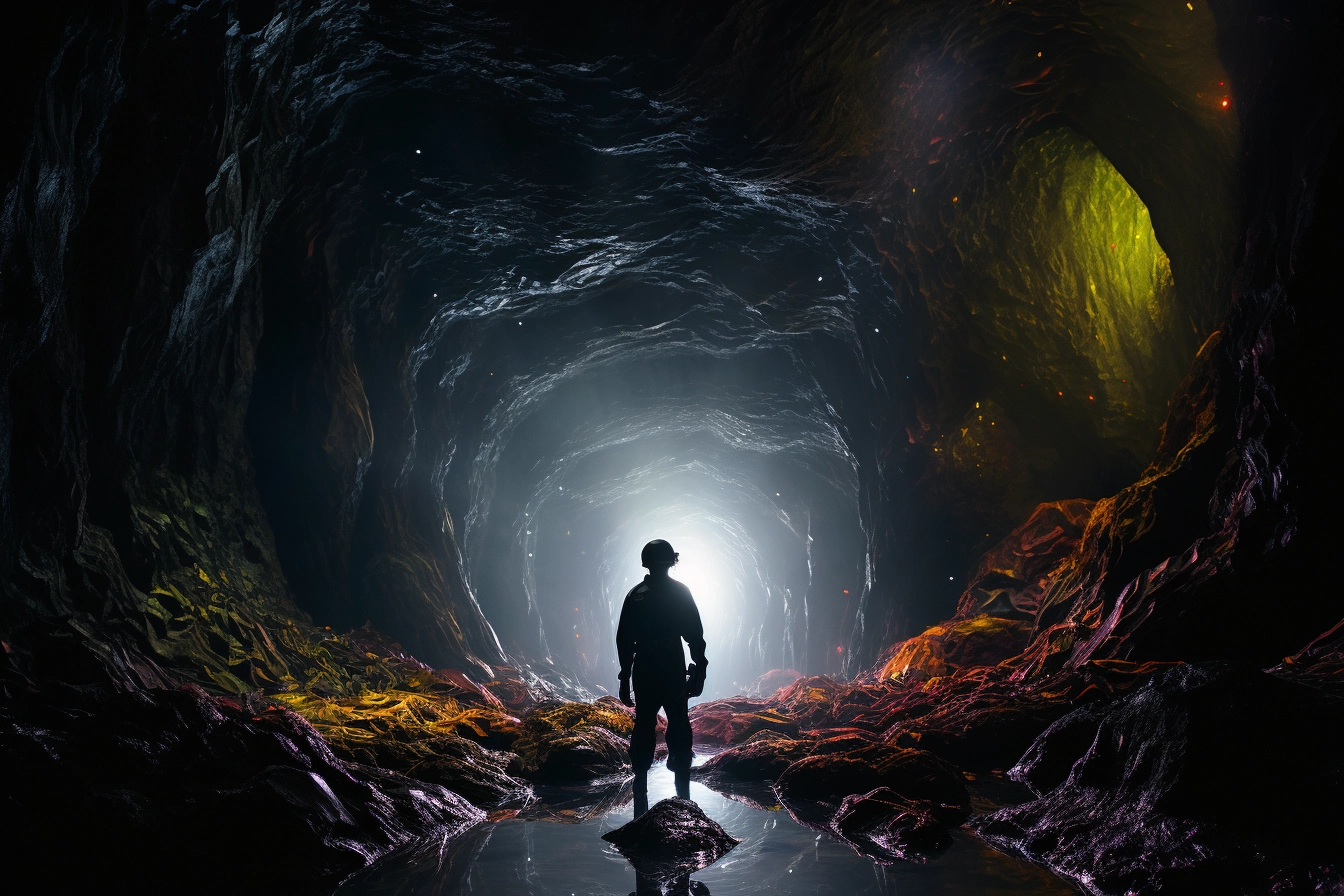
“After some initial nausea and dizziness, they envisioned themselves as in this wet, dark cave that was suddenly overtaken by rays of light. They heard a voice that they attributed to G-d saying, ‘What would be of the world if you removed yourself from it? As if this world would be better off without you?’” In the five years since that experience, the subject has not experienced any more suicidality; in fact, their life became more ‘meaningful’ by engaging with community projects, exercising more, and the like. “Do you call that spiritual or religious?” Cherniak asks. “I would humbly suggest that devoting yourself to a cause that’s beyond what feels good or is comfortable, and being in the present moment, is a highly spiritual quality.”
Sources

1. Margolin, M. (n.d.). Was Moses tripping when he saw the burning bush? Should you try? Www.timesofisrael.com. https://www.timesofisrael.com/was-moses-tripping-when-he-saw-the-burning-bush-should-you-try/
2. Green, C. A. (2023, April 26). How I Became Religious By Taking LSD. The Jewish Writer. https://thejewishwriter.substack.com/p/how-i-became-religious-by-taking?utm_medium=ios
3. Wilcox, A. (2020, September 4). Machine Elves or “DMT Elves”: A Journey Into The DMT Spirit World. DoubleBlind Mag. https://doubleblindmag.com/machine-elves-clockwork-elves-dmt-rick-strassman-terence-mckenna/
4. Wilcox, A. (2020, September 4). Machine Elves or “DMT Elves”: A Journey Into The DMT Spirit World. DoubleBlind Mag. https://doubleblindmag.com/machine-elves-clockwork-elves-dmt-rick-strassman-terence-mckenna/
5. Margolin, M. (2022, July 27). The Mechanism of Prophecy: A Conversation on DMT & the Jewish Tradition with Rick Strassman. Ayin Press. https://ayinpress.org/the-mechanism-of-prophecy/
6. Farah, T. (2020, May 20). It’s Official: DMT Makes You Believe in God. Www.vice.com. https://www.vice.com/en/article/ep4dxk/its-official-dmt-makes-you-believe-in-god
7. Mystical Experience Questionnaire – Explanation. (n.d.). Blossom. Retrieved July 27, 2023, from https://blossomanalysis.com/measures/mystical-experience-questionnaire/
8. States of Consciousness Questionnaire – Explanation. (n.d.). Blossom. Retrieved July 27, 2023, from https://blossomanalysis.com/measures/states-of-consciousness-questionnaire/
9. Wenk, G. (2021, June 26). Do Psychedelics and Prayer Activate Similar Brain Regions? | Psychology Today. Www.psychologytoday.com. https://www.psychologytoday.com/us/blog/your-brain-food/202107/do-psychedelics-and-prayer-activate-similar-brain-region
This material is not intended as a replacement or substitute for any legal or medical advice. Always consult a medical professional about your health needs. Psychedelics are widely illegal in the United States, and readers should always be informed about local, state, and federal regulations regarding psychedelics or other drugs.
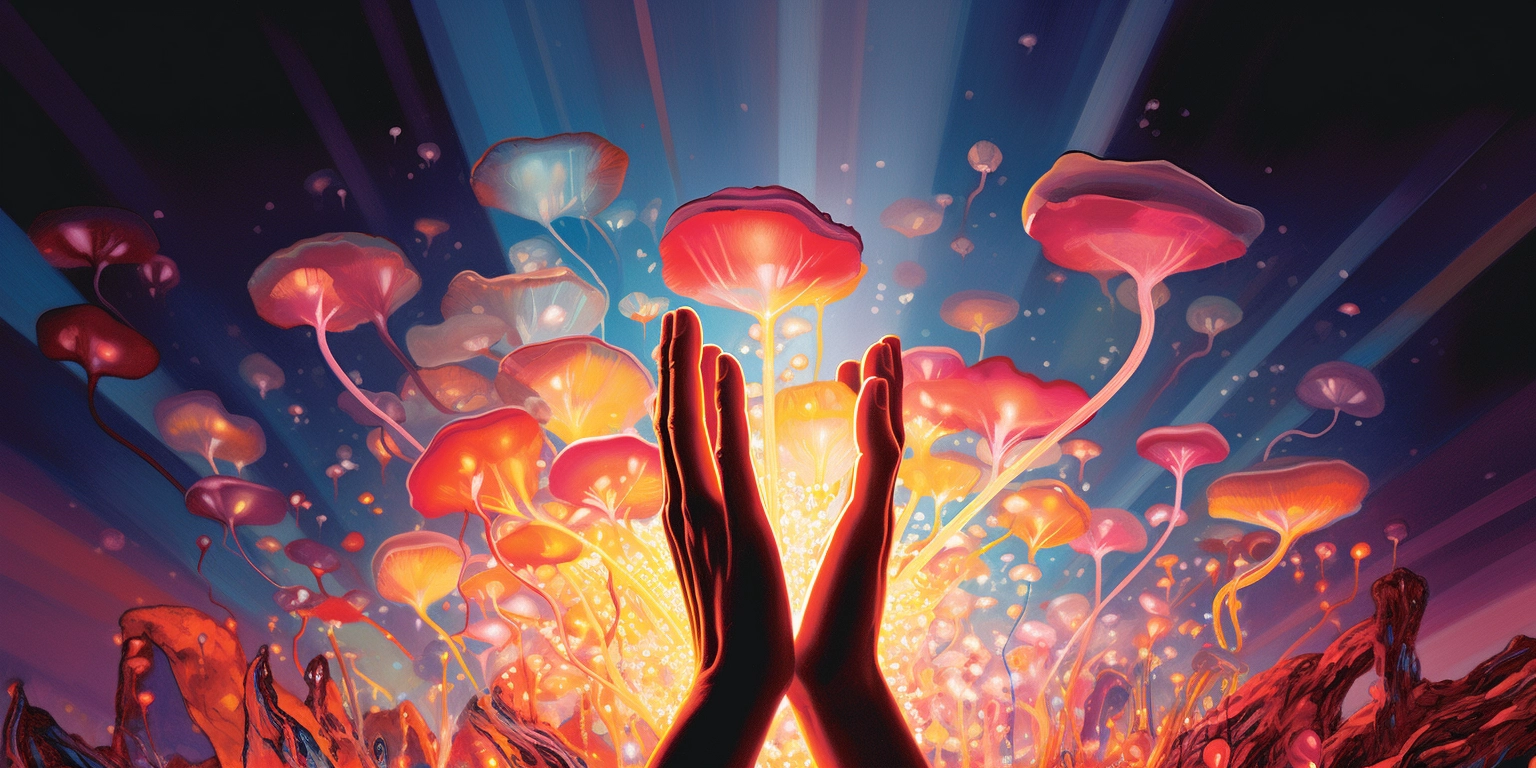
 Madison Margolin
Madison Margolin